Post by Sulema Rodriguez, Portland State University/NIH BUILD EXITO, Noggin Resource Council member for NIH BUILD EXITO
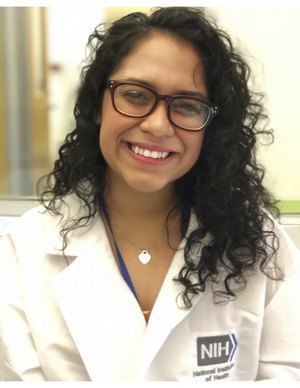
It has been about three months since my return from my NIH internship in Bethesda, Maryland. As I type this, my mind fills up with a plethora of ideas, thoughts, and emotions. Since I came back, I felt like one day I would find the “perfect” time to process everything and talk about my experience. In reality, I don’t think there is ever going to be a “perfect” time, where I can coherently express it all in words. To better understand this, I think you need to know a little more about me.

Sulema presenting to the House Neuroscience & STEAM caucuses, November 2017
LEARN MORE: The humanity of science
I’m currently a senior at Portland State University, studying and learning from various disciplines. This is mostly due to the fact that I could never decide what I wanted to focus on. My academic interests align with the varying factors involved in communication disorders, specifically stuttering. Due to the complex nature of stuttering, I felt that I couldn’t base my academic foundation in only one area of study; I believe that each area of study can inform other areas. Because of this, I am in majoring in Speech and Hearing Sciences, General Science, and minoring in Psychology. Overall, I found that this would help me in approaching this disorder from various academic lenses.
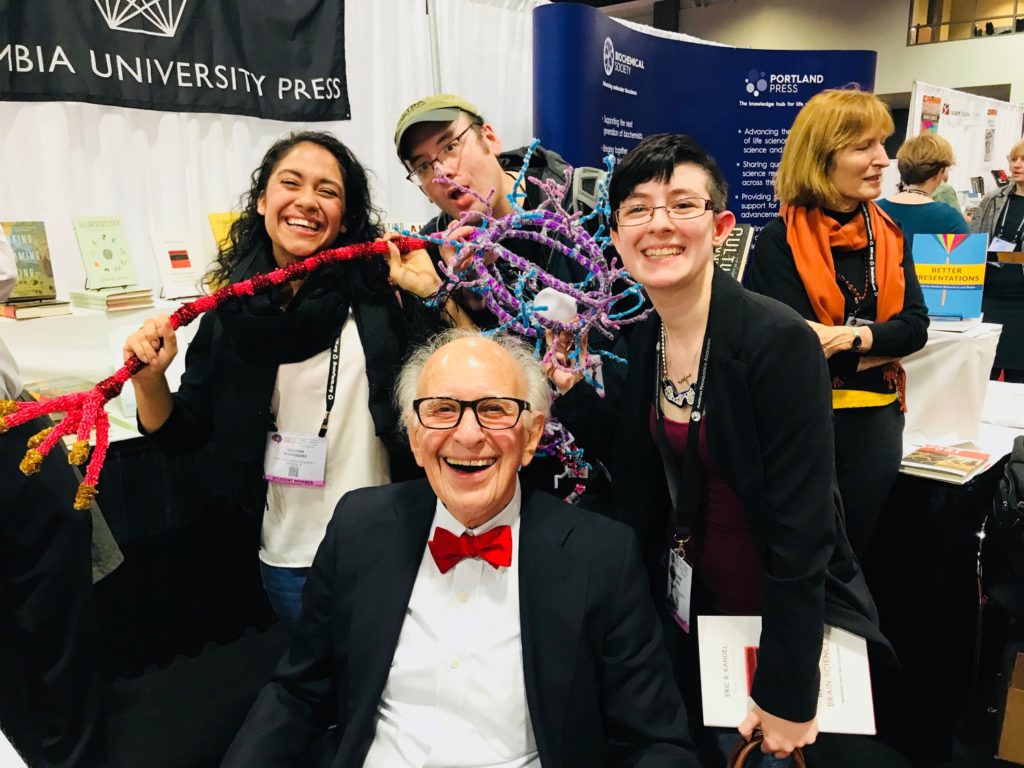
Sulema at the Society for Neuroscience conference with fellow NW Noggin volunteers and Nobel Prize winning neuroscientist Eric Kandel (and a giant pipe cleaner neuron by PSU undergraduate Alison Mack!)
Currently, the exact causes of stuttering remain unknown, but recent research has provided evidence supporting some of the genetic and neurological mechanisms involved.
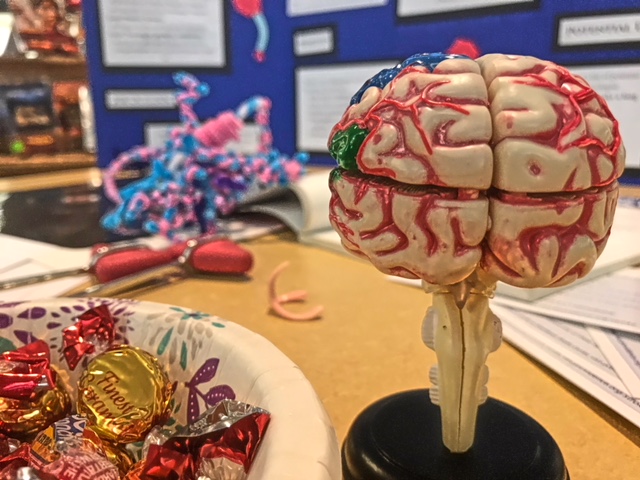
LEARN MORE: NIH/NIDCD on Stuttering
LEARN MORE: Whole-Brain Functional and Structural Connectivity Associated with Persistent Developmental Stuttering
LEARN MORE: Anticipatory Stuttering
Unfortunately, it has long been believed that stuttering is due to nervousness or shyness. We now know that stress, anxiety, and anticipation of stuttering are secondary factors and can exacerbate stuttering, but they are not the cause. Furthermore, these beliefs, along with the misrepresentation of stuttering in the media, have resulted in misconceptions of those who stutter.
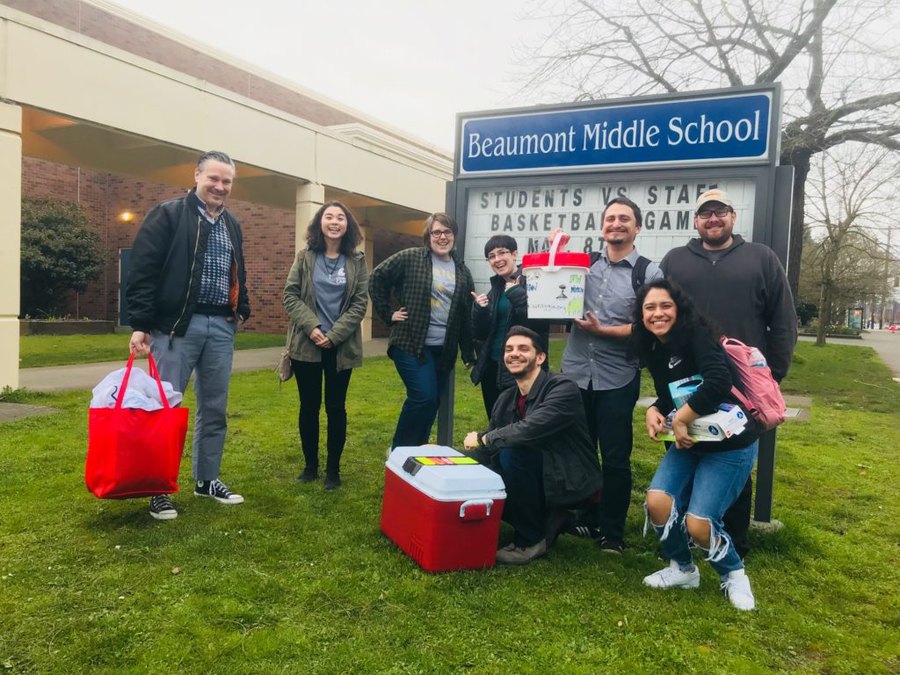
Sulema with fellow volunteers at a NW Noggin Latino Network outreach event
LEARN MORE: Latino Network Learning & Lobes
LEARN MORE: 8 Truths People Who Stutter Wish Everyone Understood
LEARN MORE: Emily Blunt Talks About Stuttering
About two years ago, I began to attend meetings of our local chapter of the National Stuttering Association. To my surprise, in one session, I had met more people who stutter than I had met my whole life. I was immersed in a pool of stuttering diversity; no one stuttered the same way I did. I noticed that some people had more blocks or repetitions than I did, while others were covert. This experience further ingrained in me that stuttering was much more complex than I could begin to imagine. In the same month, I started attending meetings, we were introduced to a documentary called “The Way We Talk.” This documentary was directed by a person who stutters and formal member of our chapter. While watching the documentary, I felt a rush of emotions. Finally, I felt that every feeling I had ever had about my stuttering was validated by this documentary.
LEARN MORE: The Way We Talk
Something unexpected happened in this documentary. Midway through, the director visited the National Institutes of Health in Bethesda, Maryland. He interviewed a researcher, Dr. Dennis Drayna, who is studying the genetic mechanisms of stuttering. Needless to say, I was in complete awe. Until that point, I had never heard of biological factors being at play in my stuttering. This particular interview led into a personal and academic journey.
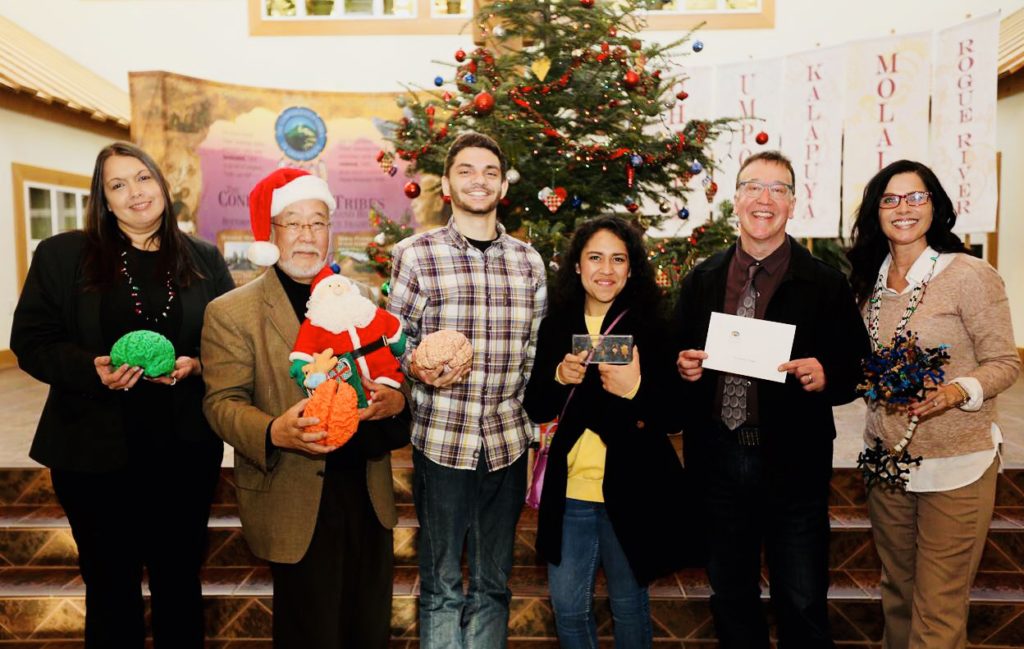
Sulema at the Spirit Mountain Community Fund grant award ceremony
LEARN MORE: Synapses & Stories: Coyote, Grizzly & their Brains!

LEARN MORE: The National Stuttering Association
LEARN MORE: National Stuttering Association – Portland, Oregon Chapter

LEARN MORE: The Stuttering Foundation

LEARN MORE: StutterTalk Podcast
LEARN MORE: A Genetics and Stuttering Update with Dr. Dennis Drayna from the NIH
LEARN MORE: Dennis Drayna, Ph.D.
This experience became the catalyst in my journey of exploring different areas of studies.
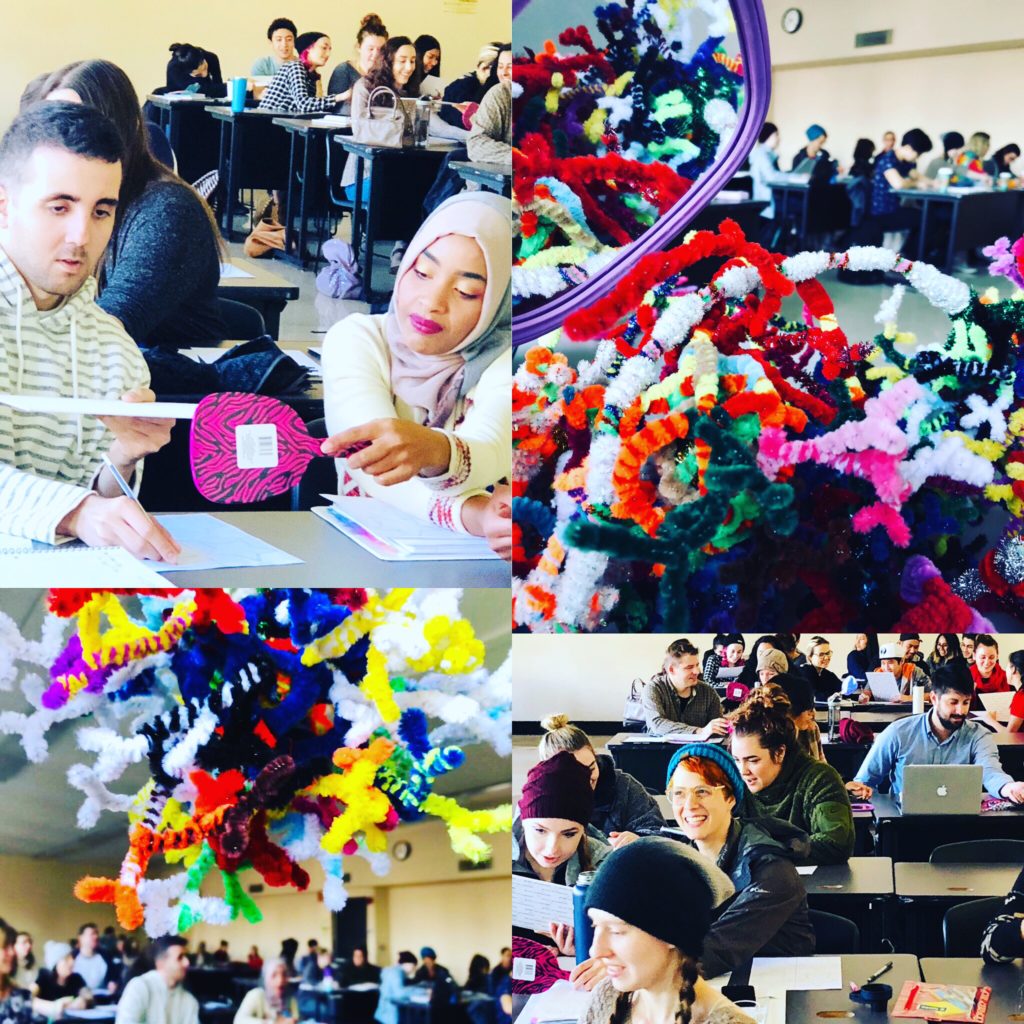
Mirror drawing experiment in Perception course at Portland State University
In the winter of 2017, I decided to take two psychology classes: Psychology as Natural Science (PSY 200) with Dr. Bill Griesar, and Perception (PSY 347) with Dr. Griesar and Jeff Leake. Not only was I fascinated to learn about the intricacies of the brain, but Bill and Jeff also encouraged students to join them to teach neuroscience and make art in local schools. Somehow, I was able to forget about my fear of public speaking and I decided to come and do outreach…
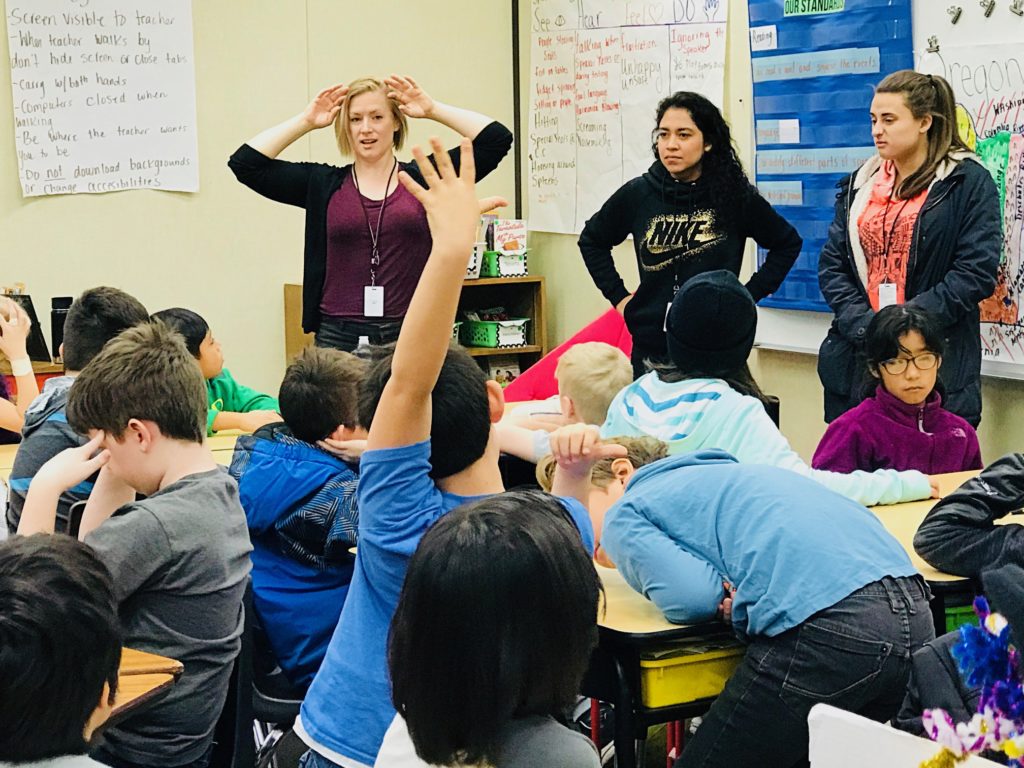
Sulema at Minter Bridge Elementary
LEARN MORE: Meninges over Minter Bridge!
LEARN MORE: Getting Involved in NW Noggin @ Portland State University
I still remember the first time I spoke in front of a class; this happened during my second outreach experience. It was quite brief, but I decided to add something to what someone else had previously said. We were discussing neurons, and I remembered what I had learned about how long sensory neurons can be. As I started speaking, I could almost feel my soul slipping out my body; I couldn’t believe that I was talking in front of a class, especially about neuroscience! I was shocked by how the words flowed out my mouth, and I knew at that moment that something great had happened.

Sulema and Noggin volunteers in the U.S. House of Representatives!
Fast forward to November of 2017. Along with NW Noggin volunteers, I had just arrived in Washington D.C. We were ready to embark on our amazing one-week trip to visit schools, present at the Society for Neuroscience and in front of members of Congress! On our last day, we would take a tour of the National Institutes of Health. Without a doubt, I couldn’t even begin to envision what our week would be like or the opportunities that were ahead. I was so mesmerized by the porcelain architecture and the buildings that I had only seen on television.

Sulema talking neuroscience with K-5 kids at Turner Elementary in Washington, DC
LEARN MORE: From Classrooms to Congress
At the beginning of the week, Bill had mentioned that there was a possibility of meeting a researcher of our interest at the NIH. I never thought this would be possible, but with the encouragement of Bill, I got to meet Dr. Dennis Drayna. Needless to say, this was quite a serendipitous encounter, because his office was located in the same building as our tour!
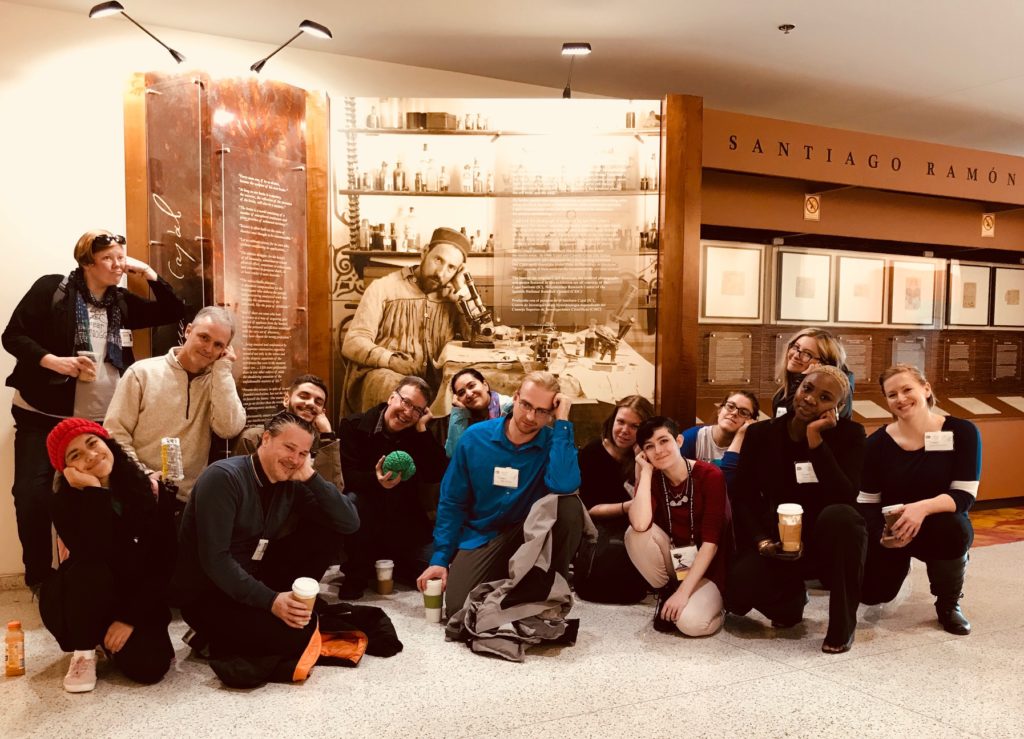
At the Cajal Exhibit, in the John Porter Neuroscience Research Center
LEARN MORE: Why Art? Noggins go to Washington
When I got to meet him I had the opportunity to ask so many questions about his research on stuttering. To my surprise, in the middle of the conversation, he asked me if I would be interested in applying for an internship. I was shocked, but my immediate response was: “of course.” At first, I was in great disbelief that I might someday work alongside a world-renowned scientist!
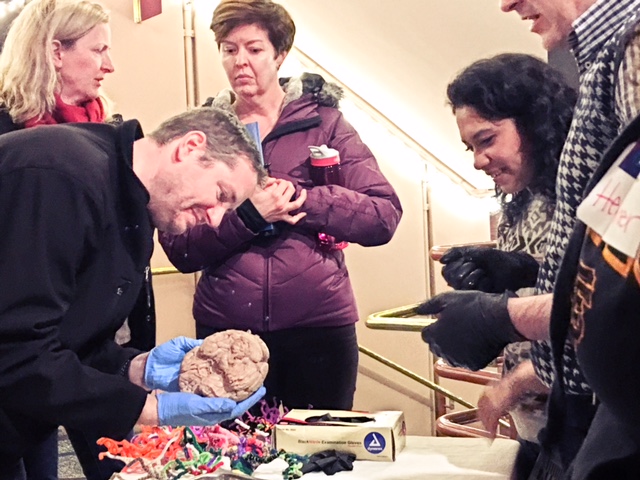
Sulema introducing brains to audience members at the OBI Brain Awareness lecture series
LEARN MORE: OBI Brain Awareness Lectures
This summer I traveled back to Bethesda, and began my independent research project, where I surveyed mutations (NAGPA, GNPTAB, and GNPTG) in genes associated with stuttering. Under the guidance of Dr. Drayna’s lab members, I was able to learn genetic techniques like DNA purification, gel electrophoresis, and PCR. Additionally, I was able to fly to Chicago to collect speech and saliva samples from people who stutter at the National Stuttering Association conference.

“As a kid, I used to stutter. I think that’s why I put my energy into making music. That’s how I get my thoughts out, instead of being crazy all the time.” – Kendrick Lamar
LEARN MORE: The Therapeutic Effects of Singing in Neurological Disorders
LEARN MORE: The Role of Rhythm in Speech and Language Rehabilitation
Overall, this experience has allowed me to view stuttering from a different academic lens. I was also able to use what I had learned about neuroscience through NW Noggin outreach to inform my internship experience. I know that my background in neuroscience outreach helped in science communication at the NIH during lab meetings and our project presentation.

Sulema volunteering in HeLa High School, Vancouver, WA
LEARN MORE: Hella Bright at HeLa
This is something that I never thought was possible for me. Without Dr. Griesar’s and Jeff Leake’s mentorship, I wouldn’t have discovered these incredible opportunities. Being a part of NW Noggin has taken me outside of my textbooks and brought me into schools to learn and teach neuroscience through art. Furthermore, NW Noggin has provided me with the chance to speak directly with members of Congress in Washington D.C, to conduct research at the National Institutes of Health – and to continue my stuttering research through PSU’s Ronald E. McNair Scholars Program.


In the classroom at Cesar Chavez Middle School, Portland, OR
LEARN MORE: Tres Escuelas en un Día!
Sometimes it is still difficult for me to stand in front of a classroom, but NW Noggin provides so many opportunities for all students to be involved. NW Noggin’s great emphasis is teaching neuroscience through art, so I find that during one-on-one activities I am better able to connect with students. When times get difficult, I know that I have a group of supportive mentors who believe in me. Thank you for your continuing support, and I hope that we continue building connections, one school at a time!
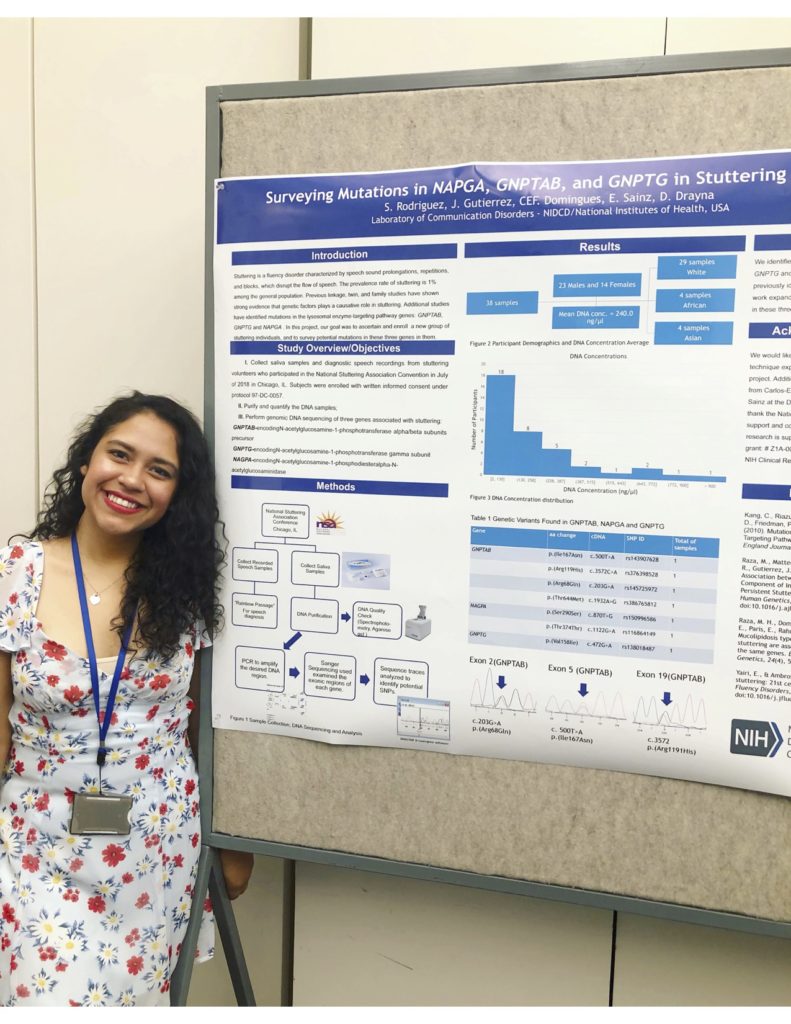
Sulema presenting her poster at the NIH Summer Poster Day 2018


